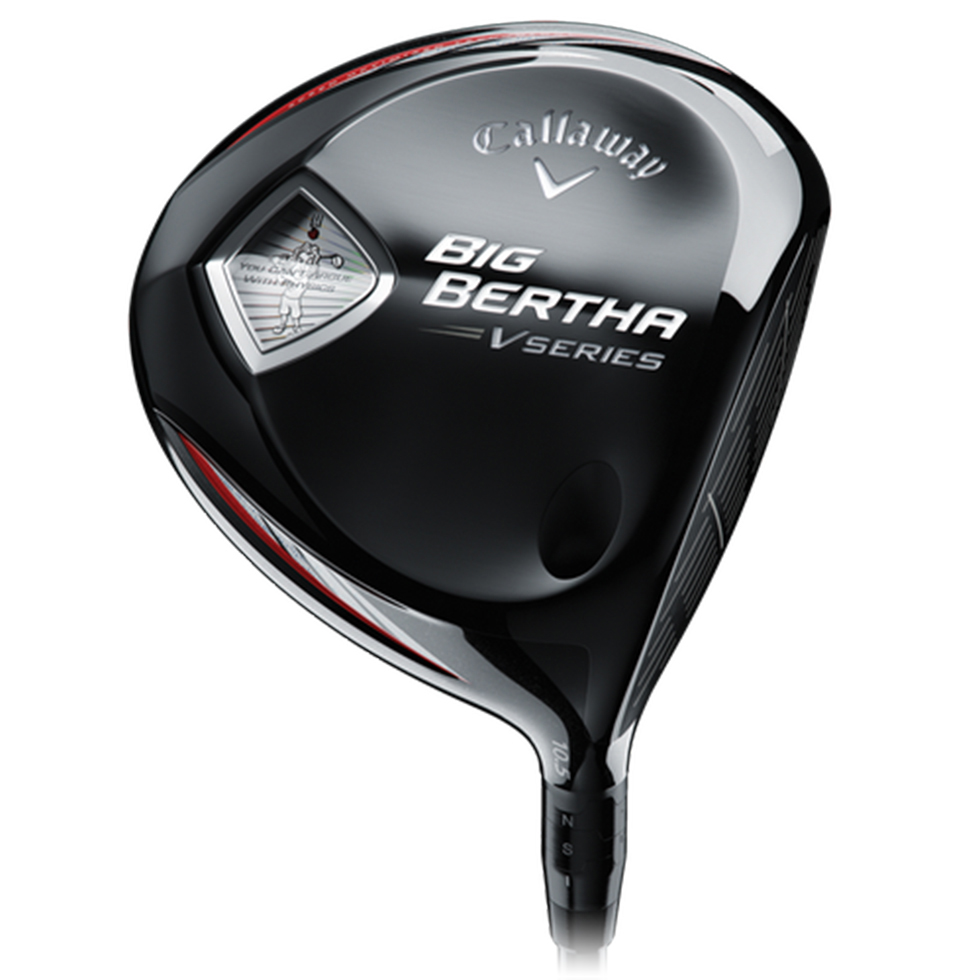 At the beginning of 2014, Callaway made a rather large splash in the driver world with the reintroduction of the Big Bertha driver. The return of perhaps the most iconic name in the company’s history was met with great success. The Big Bertha Alpha was a first of its kind driver that allowed golfers to change the vertical center of gravity of the club. The standard version of the club was also popular and allowed golfers a wide array of features that could be fine tuned to fit their games best. I was lucky enough to be the staff member that reviewed the Big Bertha driver, and it was one that found a home in my bag for a long period of time. However, it eventually did lose it’s spot to a different Callaway driver, the FT Optiforce 440, which I had reviewed just a little while before the Big Bertha.
At the beginning of 2014, Callaway made a rather large splash in the driver world with the reintroduction of the Big Bertha driver. The return of perhaps the most iconic name in the company’s history was met with great success. The Big Bertha Alpha was a first of its kind driver that allowed golfers to change the vertical center of gravity of the club. The standard version of the club was also popular and allowed golfers a wide array of features that could be fine tuned to fit their games best. I was lucky enough to be the staff member that reviewed the Big Bertha driver, and it was one that found a home in my bag for a long period of time. However, it eventually did lose it’s spot to a different Callaway driver, the FT Optiforce 440, which I had reviewed just a little while before the Big Bertha.
Enter the Big Bertha V Series. While some might figure because of the name that it is meant to replace the 2014 Big Bertha; that actually isn’t the case. It is really the replacement to the FT Optiforce which I loved so much. The first thing that I noticed about the V Series driver is that many of the bells and whistles of the Big Bertha were missing. For example, there are no sliding weights or Gravity Cores. In fact, the only adjustment that can be made is at the hosel, as the club features the Optifit hosel which has become standard on Callaway clubs. However, don’t let the lack of features fool you, this is still a club that packs a punch. Read on to get the full review.
Specifications
For the purpose of this review, I received the Callaway Big Bertha V Series driver with the stock Mitsubishi Bassara shaft in stiff flex. I received the club with a 10.5° head, however with adjustments it can play as low as 9.5° and as high as 12.5°. In addition to the driver, I also received the matching 3 wood with the same stock shaft. The clubs came with the stock Callaway grips which are essentially Tour Velvets; I have since replaced those with my grip of choice, a PURE wrap.
Esthetics
From a looks stand point, I think that there is a lot to like about the Callaway Big Bertha V Series. The 2014 version of the Big Bertha adopted a navy, red, and silver color scheme. While I’m all for being patriotic, the looks of the club never really did anything for me. The V Series is much more like the driver it replaces, the FT Optiforce. The crown features a glossy black paint job which is complimented by a black PVD face. While my preference is for no alignment aid, the V Series has adopted the Callaway Chevron logo. However, it is just a simple outline and is minimal in size, making it more than tolerable. The bottom continues the dark looks with red accent lines and white lettering. About my only complaint from a looks point of view is the goofy medallion on the bottom of the club. The medallion features the Isaac Newton cartoon that Callaway has been using along with the phrase “You can’t argue with physics.” That part of the club seems a bit out of place to me and just looks a bit weird, but it is on the bottom of the club, so whatever.
The matching 3 wood is exactly that, matching. Same paint job, same alignment aid, same goofy medallion on the bottom. It is essentially the shrunk down version of the driver. Fine by me.
The head cover for both the driver and fairway wood is the standard sock style. The main portion of the the head cover is glossy black with the Callaway logo and Big Bertha V Series stitched onto it. The sock portion is black and has some red and silver stripes. Even though the driver has a rather large club head, the head cover is easy enough to slip on and off without having the issue of falling off.
Design and Technology
I mentioned earlier that the driver didn’t have a lot of the bells and whistles found on the company’s flagship line. However, there is more going on with this club than meets the eye. The focus of Callaway engineers when designing this club was speed. The idea is simply this, the faster you can swing the club the farther you can hit the ball. Essentially, there are two things that the company can do to make it easier to swing the club fast; make it lighter and make it more aerodynamic. To achieve these two concepts, Callaway used Speed Optimized Technology in which they created a head shape that would resist drag throughout the entirety of the golf swing. The club also uses a forged composite crown which further reduces the weight of the club head, which comes in at 290 grams. The overall light weight and aerodynamic design helps golfers to achieve their maximum swing speed. To further aid in distance and get maximum ball speed, the company utilized its Hyper Speed Face. To put it simply, Callaway worked to thin out the faces as much as possible which allows for a “hotter” face with a larger sweet spot. Balls that are struck out towards the toe or in towards the heel won’t lose as much ball speed because of this and therefore should see a minimal loss in distance.
The weight saving measures serve a second purpose as well. With the weight saved in the crown and face of the club, Callaway was able to reallocate some of that weight to create a club with a center of gravity that is low and deep. At this point, I think we all know what a low and deep CG means; forgiveness.
The Big Bertha V Series also took a slightly different path compared to the FT Optiforce. With the FT Optiforce, there were two different club heads; a 440 cc version and a 460 cc version, with the smaller version aimed at the better player. This time around, there is only one size available, and it’s 460 cc. However, there are two different stock shafts. While both are light weight options, the 9 degree version comes with a slightly heavier Fujikura Motore Speeder 565 shaft while the 10.5 degree and 13.5 degree HT models come with the super light Mitsubishi Bassara. The company’s reasoning behind this is simple; most the players going for the 9 degree head tend to want a slightly heavier shaft and don’t need as much help generating club head speed while those who need the added loft also likely need the lighter shaft. Of course, if you have any of the recent Callaway offerings, it’ll be easy to swap out shafts as the club features the Optifit Hosel. The hosel allows the golfer to choose between four different loft settings settings; the stamped loft, one degree down, one degree up, or two degrees up. For each of the available lofts, one can choose either a neutral or draw setting, meaning there are a total of eight options available.
The fairway wood features much of the same technology, including a speed optimized club shape and Hyper Speed Face. Making its return to Callaway’s fairway woods is the use of the War Bird sole plate. The updated version of the sole builds off of a design that was one of the company’s most popular and aids the golfer in launching the ball high from a variety of lies. With the fairway woods there is no adjustable hosel and it comes with the Mitsubishi Bassara as the only stock option.
Performance
Like I always say in these reviews; it’s nice to have a good looking club, but what matters the most is how it performs on the course. Overall, I found the club pretty easy to hit, however, to be perfectly honest, I wasn’t a huge fan of the shaft in the driver. I’m used to a slightly heavier shaft, and I found the Bassara to be too light for my liking. This wasn’t exactly a hard problem for me to solve however as I had a Diamana S+ from the FT Optiforce that I installed instead. Even though that shaft is about 10 grams heavier, I found that swung it at about the same speed (95-100 mph according to the launch monitors at my local golf store). I felt like I had better a better feel with the shaft, and I was able to achieve more consistent results.
Compared to the FT Optiforce, the club head seems huge. The FT Optiforce 440 had a pretty deep face, and the extra 20 cc of club head and a different club head shape of the Big Bertha V Series creates a much larger look at address. The lines of the club are clean, and I found it easy to align at address. Even though the face is large, it won’t be a surprise to those that have played golf with me that I found no problem hitting shots off the heel or toe of the club. While I’d rather hit the center of the face every time, my lack of skill did give me a good chance to test out the full capabilities of the Hyper Speed Face. Off the tee, I managed to average about 230 yards, which is about the norm for me and well struck shots easily got out to the 240 mark. Shots out on the heel or toe didn’t seem to loose too much distance unless they were way out there, and then in that case, no club is going to help you. There were many times that I was surprised at how far the ball managed to go after hitting a shot that I thought I missed pretty badly.
Accuracy was nice as well. Over the last few months, I’ve been able to develop a driver swing that produces a pull fade, and I had no problem repeating that shot with the V Series. When my swing is in order, I have no issues finding the fairway, and have had plenty of rounds with this driver where I’ve found 10 or more of the 14. In my opinion, there are two things that Callaway does better than anybody else on their drivers. The first is the Optifit Hosel. It gives players plenty of options, it’s easy to read (no chart needed), and I like that the shaft stays in the same orientation regardless of the setting I choose. I did play around a little bit with the different settings, and as expected the changes were subtle. I tend to keep these adjustable clubs at the standard setting and that’s right where I like this one as well. What I take from that is this: the hosel will do nothing but fine tune and make small changes. If you think that putting the club on the draw setting is going to make your slice go away, you should think again, because that’s not the case.
The second thing that I think Callaway absolutely nails with their drivers is sound. Maybe it’s because I’ve been playing Callaway products for a while now (X Hot, FT Optiforce, Big Bertha, and now the V Series), but I don’t think I’ve hit a better sounding driver. I don’t like the loud, obnoxious sounding drivers, and this driver isn’t one of those. The sound is not high pitched, and the best way I can describe a well struck shot is muted and powerful. When hit out on the toe or in on the heel, the sound is more dead. Just based on sound, it is pretty easy to tell if you really got ahold of the drive or not.
Over the last three or four seasons (or maybe five, I can’t remember) I’ve abandoned a 3 wood in favor of a more forgiving 4 wood. I just found my swing to be far to inconsistent at the time when I made the switch to rely on a 3 wood. When I got it, it was good, but when I didn’t it was bad. The extra few degrees on the 4 wood made at least some of those bad shots go away for me. Maybe over the last few years, my swing has evolved to the point where hitting a 3 wood isn’t the challenge for me that it once was, but I should probably give some of the credit to the design of the Big Bertha V Series 3 wood. I started playing golf when I was in high school, and one of the first three woods I used was a Big Bertha with the War Bird Sole. This club has an updated version of that sole, and whether I’m hitting it off the tee, from the fairway, or out of rough, I have confidence that I can make clean contact and get the ball into the air. While I wasn’t a fan of the light weight Bassara shaft in the driver, it seems to go nicely in the fairway wood. For a player that isn’t terribly long, being able to have a 3 wood that I can count on is key as it makes the third shots into par fives that much shorter. As any reader of this site knows, the number one determiner in how close the ball ends from the hole is how close it started to the hole, and this club allows my next shot to be closer to the hole.
Conclusion
So, after reading all of that, the question usually is, should I buy it? And that is where I get stuck. With the three wood, the answer is an easy one, and that is yes. It’s easy to hit, goes where I want it to go and is a club I rely on. The driver is a bit harder. It’s a club that I really like, and one that I think I hit pretty well. However, I don’t necessarily hit it any better than other drivers that have found their way into my bag, and for either the same price or maybe a little more, you can easily get a club with more adjustability such as the new Big Bertha 815 Alpha. Now, whether or not you’d need the added adjustability is a question you’d have to answer yourself; but I can’t see how having that option would hurt. So, my answer to the “should I buy it” question is this: if you are looking for a club that makes it a bit easier to swing quicker, then go for it; but if that’s not an issue then maybe you can find something that will give you a few more options. As always, the best way to find out is to go to a local fitter, get on a monitor and try out a few different clubs. At the very least, I’d say that the Big Bertha V Series deserves to be on the list of clubs to try.

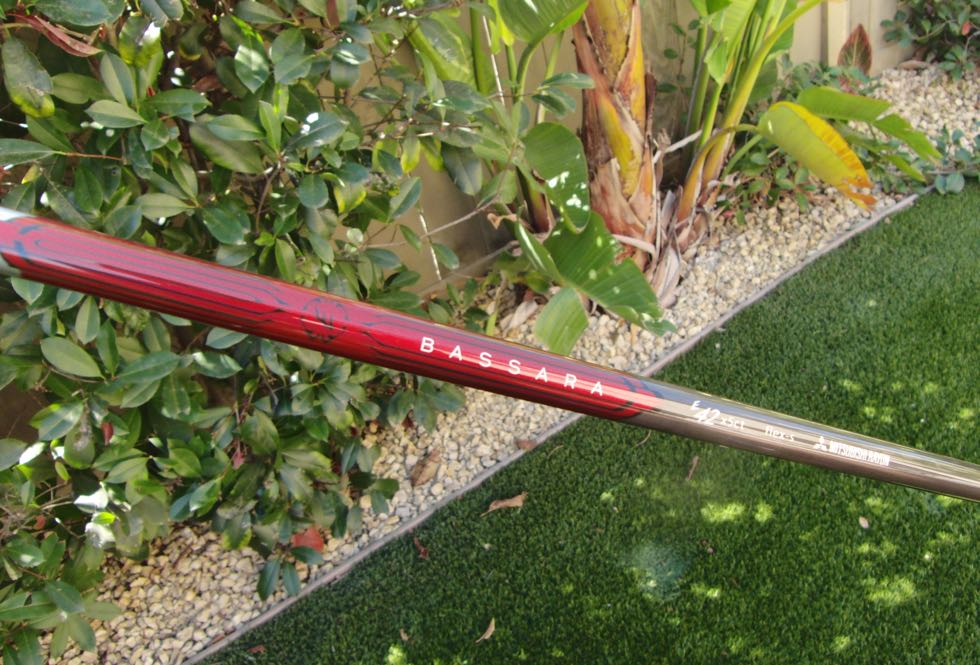
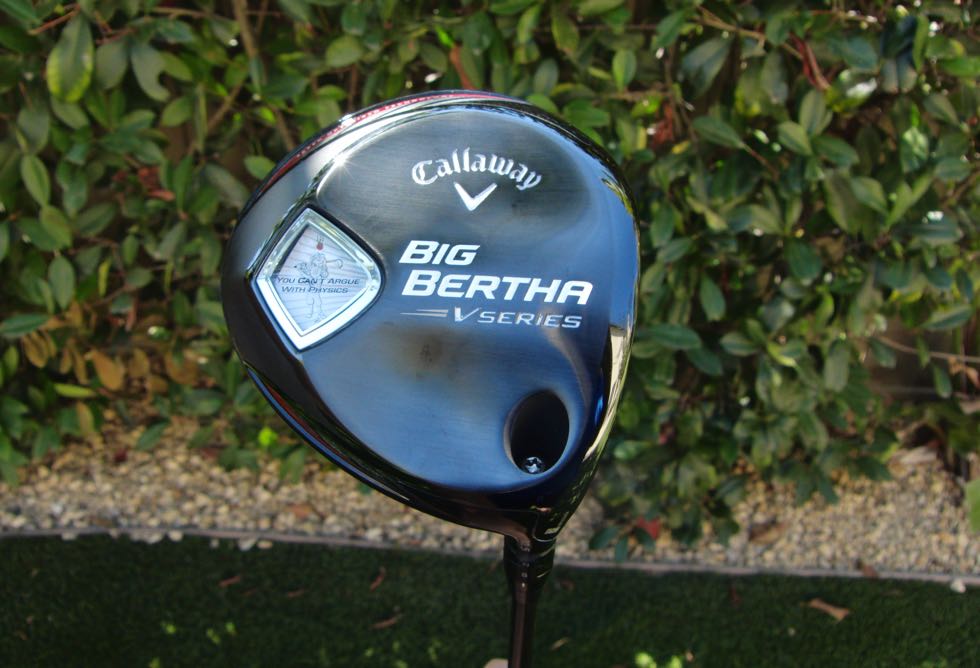
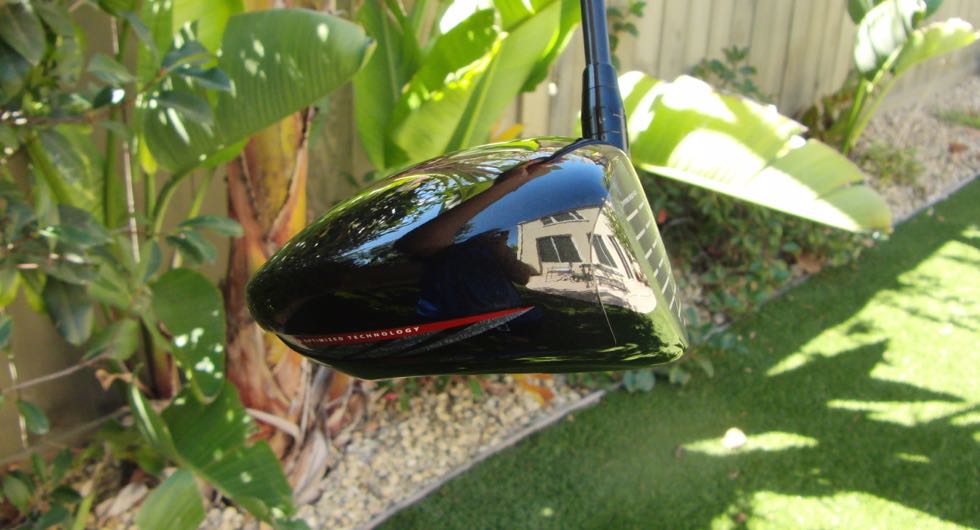
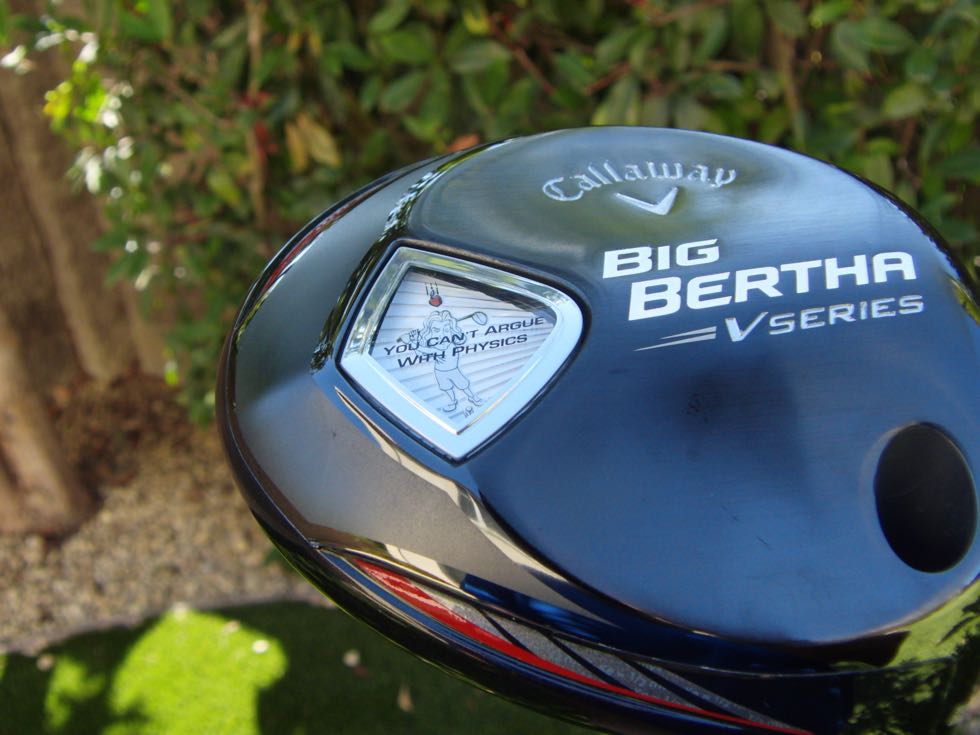
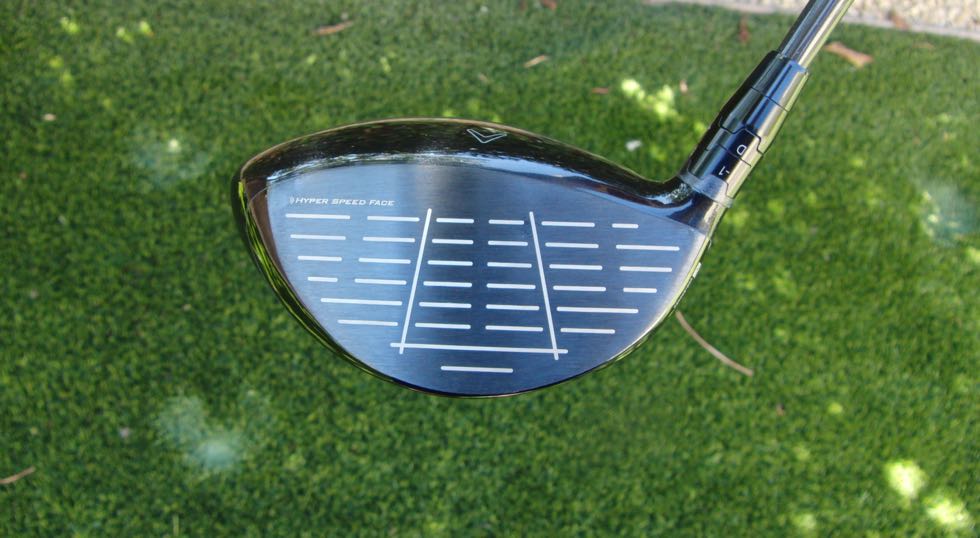
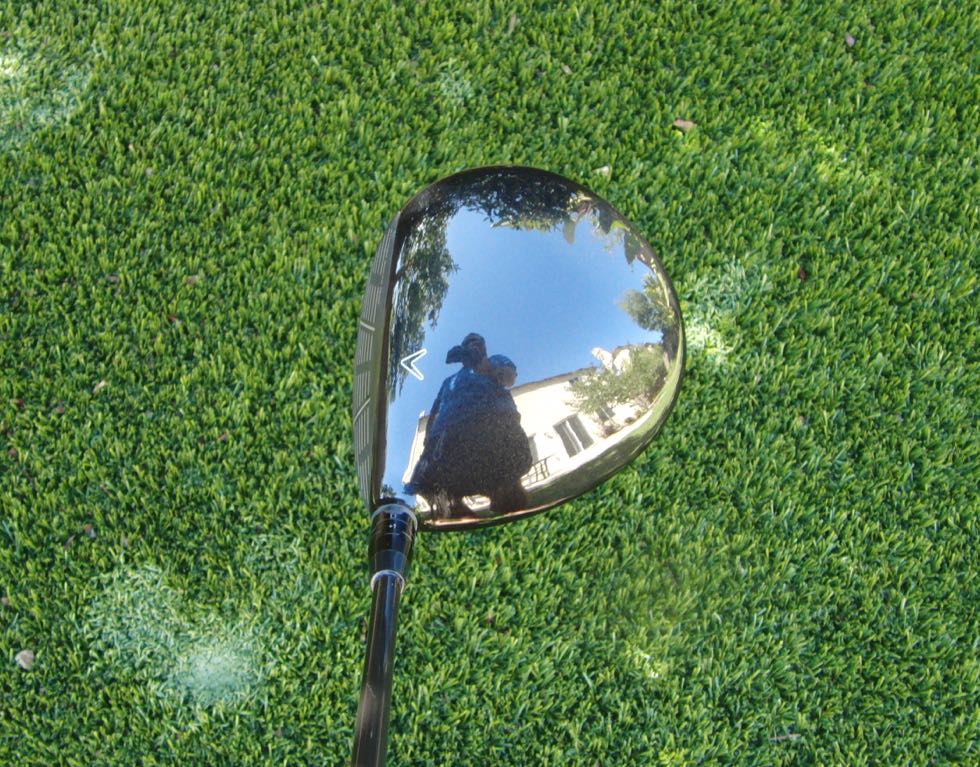
I bought the stock V series as per your test, late last year. I love it! The light shaft seems to suit my swing, and as you say the sound / feel of well hit shots just makes me grin! I can understand that the weight won’t suit everybody, but I would definitely recommend giving it a try. My swing speed is also high 90’s with this driver. Initially I wasn’t middling it regularity and 11.5° worked best, but I’ve since improved and put t back to10.5°. A lovely, solid ball flight.
V Series Driver – purchased the 10.5 in 10/14 with the Fuji Shaft at 45 inches – enjoyed the driver. It launched higher than expected, which was a benefit for me – gave me a more ideal trajectory at 11.5. Enjoy its look and forgiveness, and added 5 mph over a traditional weighted driver so I was in the low 90’s. Intrigued, I added the stock shaft at 45.5 from CallawayPreOwned for $100 with the Optifit hosel. Did not have good results at that length until I added a counterweight of about 70g – the balance certified driver CB weight – I am obtaining center contact with the stock length and added 2-3 more mph over the Fuji and was able to loft it at 10.5 – the stock shaft is also about 10g less than the Fuji shaft. From reviews, most golfers states the stock shaft plays to flex even though it is light.
V Series 3 and 5 wood — enjoy the appearance and forgiveness even with the longer shaft length – haven’t carried a 3 wood in years, but the stock clubs deliver great results — the 3 wood launches higher than most, and the 5 wood is a great confidence builder. The stock club is meant for golfers who need distance and that usually means more carry – these clubs deliver. Stock shaft is slightly heavier than the stock driver shaft and I was surprised at how much speed they deliver through the hitting zone so you don’t get the fats (as I did with heavier headed clubs). Straight and forgiving.
Heavenwood — I am trying to see where this club fits in my bag — it is actually larger in volume than the 5 wood with a slightly longer shaft length but it is prone to inconsistency for me. I think this is where the stock shaft works against me — I need more shaft heft and less shaft length. For slow speed golfers, this club may be the only fairway they require. For the remainder of us, the 5 wood, and then hybrid as the next club is an option. I may take the Heavenwood and convert it to a 7 wood with more shaft and less length.
I’d say the V Series scores high in ease of use and greater distance for its intended market – very satisfying clubs.
After further review of the Heavenwood, I think it is an option for the slower speed golfer who does not get sufficient distance with a 3 or 5 wood — for that golfer, the Heavenwood at 20.5 degrees and 43 inches with a 53g shaft can be the lowest lofted fairway in the bag.
Instead of modifying it, I took the trade-in/trade-up hit and purchased a V Series 7 wd with a Fuji 665 Shaft.
Happy golfing.
My V Series saga continues. Discovered my swing speed, after lessons, is now 95-99, instead of 88, so my R Flex does not work, and neither does the 10.5 head which is 11.5 and the lie a bit too upright.
Demoed a FlyZ, FlyZ+, BB 815, and Callaway XR. The FlyZ is a sweet driver, but it would take time. I hit a few long ones with it but not more than 235. The BB 815 w/ Fuji 565 felt great … was getting 210-215 carry and 20 more in roll. Thought I’d look at a V Series 9 Degree, which is slightly heavier than the other V Series and the weight is configured differently – hit it in the 661, but the V9/565 Stiff was coming in at better carry than the BB 815 and more than 240 total w max swing speed at 99, good spin was 2100-2300. I could work with that. So old V Series traded in. Saga continues. Can I get my speed past 100?
Okay, a final comment on the V Series as it is no longer in production.
It is a light head driver – for seniors with slow speed – in the 80’s and who are deliberate with a normal or early release, get the Bassara Shaft and go home – this is it. Or try the XR Driver with the PX LZ shaft and compare.
For normal guys, get the Fuji 565 shaft, and swing smoooooothly. If you are not a smooth swinger, add tungsten tabs towards the back and fade part of the head (toe), if you go 10.5/13 head. The 9 degree head has less draw bias. If you have trouble with contact, cut .5 inches, get to 45 inches, and add another tungsten tab for feel (golfworks tabs). The tabs are small and thin. Good luck.
Oh, the fairways? Great if you have trouble with getting a 3 or 5 wood in the air – stock Bassara will give high launch and added spin. They are forgiving and I find them accurate. If you want something in the current lineup, try the XR, which are similar with the matte finish. Good luck.